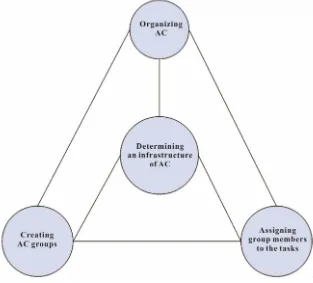Adaptive Collaboration Model for Organizational Change
Full text
Figure




Related documents
I also conducted countless interviews with directors, producers, festival organizers, audience members, film students, and government representatives; translated
Turbochargers (TC) are needed to supply most of the intake pressurization required to compress ambient air into the intake. Volume flow requirements increase with
At the regional level (in federal state authorities and state authorities of the subjects of the Russian Federa - tion), 696.7 thousand people occupied the positions of the
suggested, all farmers have the same production function and know i t , and all seek to maximize profit, then they would all use the same amount of fertiliser and achieve the same
By means of construction, the outputs of a splitter can have varying degrees of throughput, which is highly beneficial when designing optical networks, whether the splitter is used
Hence, the Court’s explicit distinction between state legislatures and Congress as plaintiffs might presage the Court’s willingness to take exactly the course that Hessick
In our analysis of a corpus with annotations of subjective expressions and their contextual polarity, we find that positive and negative words from a lexicon are used in neutral